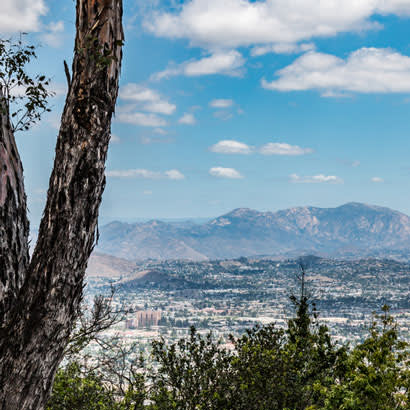
In 2018, the city of El Cajon, California became one of the first cities to be awarded NRPA’s 10-Minute Walk Planning Grant and Technical Assistance, provided in partnership with the Trust for Public Land (TPL) and the Urban Land Institute (ULI). This was a huge achievement for a city that never had a park and recreation master plan, reached 99 percent build-out, and experienced limited fiscal means to use money from general funds for any type of park planning. Located in the eastern part of San Diego County, El Cajon is the lowest household income city in the county, with about 23 percent of the population below the poverty line.
In the past decade, the city has seen more than 5 percent growth, primarily due to a large number of refugees from Iraq, Afghanistan and Syria relocating to the city. We have added Arabic as a third language to some of our park signage. In addition, 27 percent of the households in El Cajon speak Spanish as their primary language. The city has become very diverse in a short period of time and residents are clamoring for more outdoor opportunities.
The city was established in 1912, but did not build its first public park until 50 years later. In the 1960s, city leaders recognized this dilemma and tried to come up with new ways to meet community needs. The city now boasts six recreation centers that exceed the national average for a population of just over 100,000.
But according to TPL’s Park Serve, the city only serves 45 percent of the population with a park within a 10-minute walk of home. Several areas in El Cajon are currently “underparked.” With 1.2 acres of parkland per 1,000 residents, the city ranks far below the national average of 10 acres.
Recognizing our current dilemma, we decided to put our emphasis toward pocket parks when crafting the 10-Minute Walk Plan. We define those as spaces less than 10,000 square-feet. To create this plan, we hosted 18 community meetings in strategically underparked areas of the city to get community feedback. At one meeting, we provided translators for five different languages — it was very special to witness this as a meeting facilitator. Taking advice from both TPL and ULI representatives, we did not identify specific properties in our plan, but rather general areas as to keep the potential land acquisition process confidential.
The feedback from the community has been outstanding. It has provided us with the information necessary to finalize our City Council approved plan renamed, "El Cajon 2030: Connecting People with Parks." Through this plan, we set out to add five to seven parks that will ensure 90 percent of our community is within a 10-minute walk of a park. Working with a consultant we hired with the NRPA grant funds, we recognized multiple ways of funding, acquiring, leasing and having land donated for park space. Looking into additional public-public partnerships and public-private partnerships may also increase park access for all residents. Currently, we are talking with land developers about their willingness to donate small partitions of land just for public playgrounds. This plan created a vision and roadmap for the city and we are excited about our ongoing work to execute this vision.
Learn more about El Cajon’s 10-Minute Walk Plan here.
Frank Carson is the Director of Recreation for the City of El Cajon, California.


